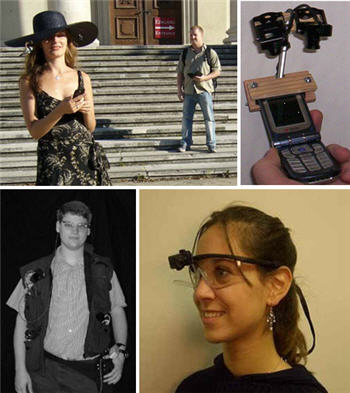Abstract The main challenges for mobile usability labs, as measurement instruments, lay not so much on being able to record what happens on the user interface, but capturing the interactional relationship between the user and the environment. An ideal mobile usability lab would enable recording, with sufficient accuracy and reliability, the user’s deployment of gaze, the hands, the near bodyspace, proximate and distant objects of interest, as well as abrupt environmental events. An inherent complication is that the equipment will affect these events and is affected by them. We argue that a balance between coverage and obtrusiveness must be found on a per case basis. We present a modular solution to mobile usability labs, allowing both belt- and backpack-worn configurations …
Read more


